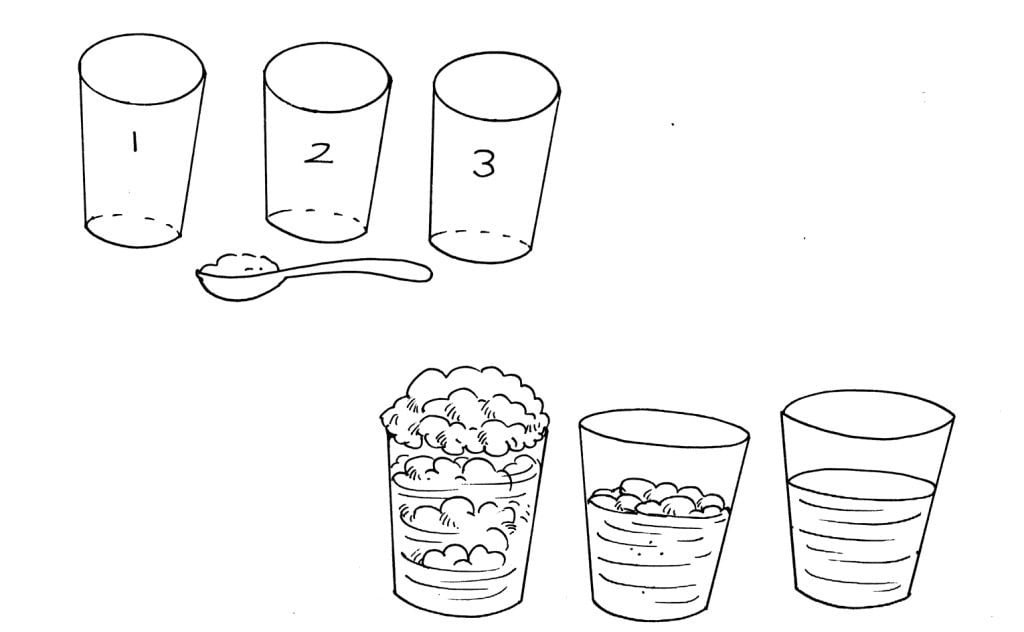
Yeast, a tiny colourless plant, has been used for thousands of years to put air into breads and cakes.
Things Required:
Warm water
3 glasses
2 tablespoonful of sugar (brown or white) or honey or molasses
2 tablespoonfuls of flour
A pkg of dry yeast or a cake of compressed yeast
Adhesive tape
A felt-tipped pen
Directions:
Pour 2/3 of a cup of warm water into each of the glasses. Number the glasses. Add the sugar to number 1. Add the flour to number 2. Don’t add anything to number 3. Next, add an equal amount of yeast to each glass. Let them stand. Observe them after 10 minutes, 20 minutes, 30 minutes. Note the differences.
This Is What Happens:
Glass number 1 produces bubbles in the first ten minutes.
Glass number 2 produces bubbles after 15 or 20 minutes or so.
Glass number 3 never bubbles.
Science Behind It:
Yeast is a fungus. It feeds on sugar and breathes out carbon dioxide.
In the glass with sugar, it eats quickly, and soon produces carbon dioxide, which makes bubbles. In the glass with the flour, it takes longer because the enzymes in the yeast have to turn part of the starch of the flour into sugar before the yeast can digest it.
In the glass of plain water, the yeast has no sugar on which to feed and so does not produce carbon dioxide. Some sugar is required for yeasttofeedonToo much sugar, however, slows the production of carbon dioxide or even stops activitycompletely.

